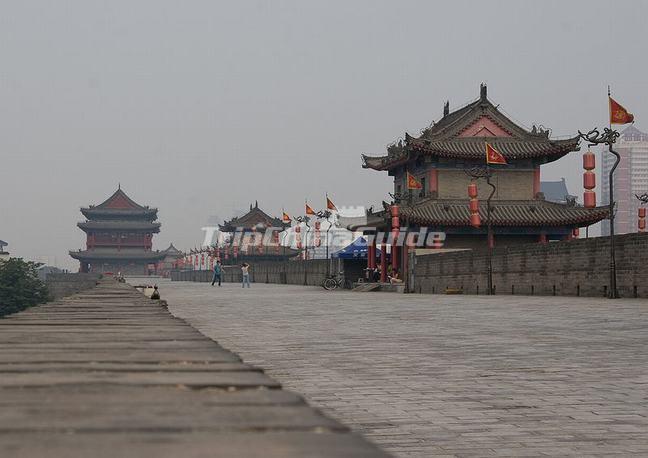History of Xi'an
Xi'an was once called "Chang'an" in the Han Dynasty. The connotation of this name is "permanent peace". Xi'an marked the starting point of the world famous Silk Road. It obtained its present name in the year 1369. Xi'an ranks first on the list of the country's seven largest ancient capitals. From 11th century B.C. onwards, Xi'an or its vicinity has been established as the capital city by 15 kingdoms or feudal dynasties successively, including the Western Zhou, the Qin, the Han, the Sui and the Tang. It serves as an ancient capital city beyond comparison with regard to the number of dynasties and span of time.
Xi'an has a rich and culturally significant history. The Lantian Man was discovered in 1963 in Lantian County, 50 km southeast of Xi'an, and dates back to at least 500,000 years before the present time. A 6,500-year old Banpo Neolithic village was discovered in 1954 on the outskirts of the city proper.
11th Century BCE to 19th Century CEXi'an became a cultural and political centre of China in the 11th century BCE with the founding of the Zhou Dynasty. The capital of Zhou was established in the twin settlements of Fengjing and Haojing, together known as Fenghao, located southwest of contemporary Xi'an. Following the Warring States period, China was unified under the Qin Dynasty (221-206 BCE) for the first time, with the capital located at Xianyang, just northwest of modern Xi'an. The first emperor of China, Qin Shi Huang ordered the construction of the Terracotta Army and his mausoleum just to the east of Xi'an almost immediately after his ascension to the throne.
In 202 BCE, the founding emperor Liu Bang of the Han Dynasty established his capital in Chang'an County; his first palace, Changle Palace, perpetual happiness) was built across the river from the ruin of the Qin capital. This is traditionally regarded as the founding date of Chang'an, or Xi'an. Two years later, Liu Bang built Weiyang Palace (perpetual happiness) hasn't reached its midpoint yet) north of modern Xi'an. The original Xi'an city wall was started in 194 BCE and took 4 years to finish. Upon completion, the wall measured 25.7 km in length and 12–16 m in thickness at the base, enclosing an area of 36 k㎡. In the year 190, amidst uprisings and rebellions just prior to the Three Kingdoms Period, a powerful warlord named Dong Zhuo moved the court from Luoyang to Chang'an in a bid to avoid a coalition of other powerful warlords against him.
Following several hundred years of unrest, the Sui Dynasty united China again in 582. The emperor of Sui ordered a new capital to be built southeast of the Han capital, called Daxing (great prosperity). It consisted of three sections: the Imperial City, the palace section, and the civilian section, with a total area of 84 k㎡within the city walls. At the time, it was the largest city in the world. The city was renamed Chang'an in the Tang Dynasty. In the mid-7th century, after returning from his pilgrimage to India, Buddhist monk Xuanzang (popularly known as Tang Sanzang) established a translation centre for Sanskrit scriptures. Construction of the Great Wild Goose Pagoda began in 652. This pagoda was 64 m in height, and was built to store the translations of Buddhist sutras obtained from India by Xuanzang. In 707, construction of the Small Wild Goose Pagoda began. This pagoda measured 45 m tall at the time of completion, and was built to store the translations of Buddhist sutras by Yijing. The massive 1556 Shaanxi earthquake eventually damaged the tower and reduced its height to 43.4 m.
Chang'an was devastated at the end of the Tang Dynasty in 904. Residents were forced to move to the new capital city in Luoyang. Only a small area in the city continued to be occupied thereafter. During the Ming Dynasty, a new wall was constructed in 1370 and remains intact to this day. The wall measures 11.9 km in circumference, 12 m in height, and 15–18 m in thickness at the base; a moat was also built outside the walls. The new wall and moat would protect a much smaller city of 12 k㎡.
20th Century and AfterIn October 1911, during the revolution in which the Qing Dynasty was overthrown, the Manchus living in the northeastern zone within the city walls were massacred. In 1936, the Xi'an Incident took place inside the city during the Chinese Civil War. The incident brought the Kuomintang (KMT) and Communist Party of China to a truce in order to concentrate on fighting against the Japanese Invasion.













